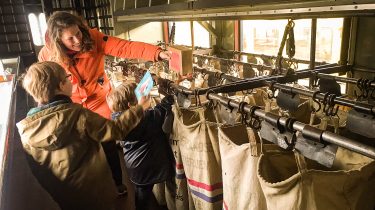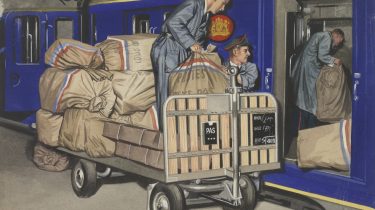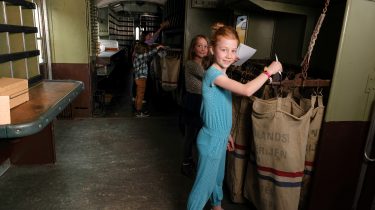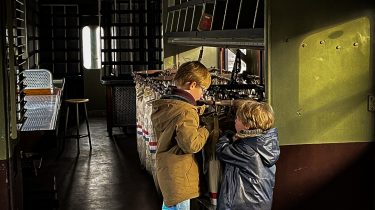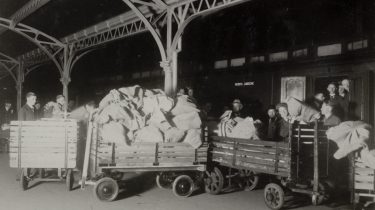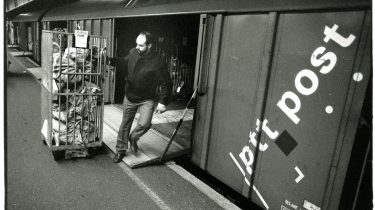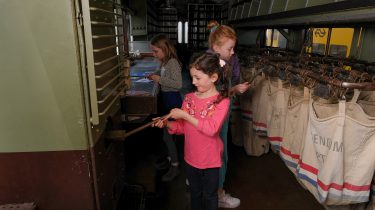
Exhibition 'Expedition Rail Mail'
- Activity
- Exhibition
- Date
- 17 May 2022 t-m 27 Nov 2022
- Age
- Children ages 4+, Adults
History
Letters used to be transported on foot, on horseback, by stagecoach or by barge. The arrival of the train in the 19th century changed that. Transport by train was fast and efficient, not only for passengers and goods but also for mail. In the beginning, mail was transported in passenger trains, and later special mail trains were built that often ran at night. With a number of special collection pieces, the exhibition Expedition Rail Mail gives an overview of the development of mail transport by train from the mid-19th century until 1997, the year that the mail train made its last journey in the Netherlands.
On expedition
There is not only a lot to see, but also a lot to do. Meet Chief Mail Carrier Willem who is desperately in need for help with the work. Help him in the search for the missing postal package, try to sort the mail within the time limit and take on the challenge of getting a mailbag off the hook just like they used to do from a moving train. At the end of this expedition, the completed stamp card can be posted in the letterbox. You might even win a nice prize!
The trains
Five stunning mail trains from the Railway Museum are at the core of the exhibition. You can see or do something special in every coach.
- The Pec from 1938 has been in the museum depot for a long time and comes to Utrecht specifically for this exhibition. In this Pec, the P stands for Postal Service, the E for Electric and the C for the presence of a toilet (closet in Dutch) on board. This hauled coach can be recognised by its distinctive dented nose in front of the coupling and is therefore also called dented nose.
- The Motorpost Mp3031 is a self-propelled train from 1966, which was decorated for the exhibition with smaller objects such as models, paintings, prints and posters.
- The 1952 Plan C mail coach contains a beautiful sorting department where you can play a fun postal sorting game, among other things.
- The Hpost is the most recent, from 1978. Roll containers with mailbags were transported in this hauled coach with its characteristic rolling doors. The coach is set up as a room for arts and crafts, and cinema. Watch a film about the history of mail transport by train here.
- An extra add-on is the first-class coach of the Arend. In the mid-nineteenth century, it had a mail department that now has been restored by the museum.
Special objects and stories
A number of remarkable collection pieces are on display at the exhibition. The museum shows for instance the oldest letter sent by rail from the collection; the letter was sent in 1852 when there were no stamps. Also from the depot is a painting by Herman Heijenbrock, who in 1937 captured the postal sorters at Utrecht CS at night in pastel shades. The museum also shows some unique train models, such as a diorama built especially for the exhibition of one of the first State Mail Coaches from around 1856 and a mail coach from Java with a so-called Bag Exchange System that used hooks to catch mailbags from the moving train. You can find facts and stories throughout the exhibition, for instance about a brutal robbery on a mail train in 1985 and about a mysterious victim of a train accident in Vlissingen.
The Utrecht Story
In connection with the 900th anniversary of Utrecht, Expedition Rail Mail pays special attention to mail transport in and around Utrecht. Given its central location, this city was traditionally a hub for mail transport.

